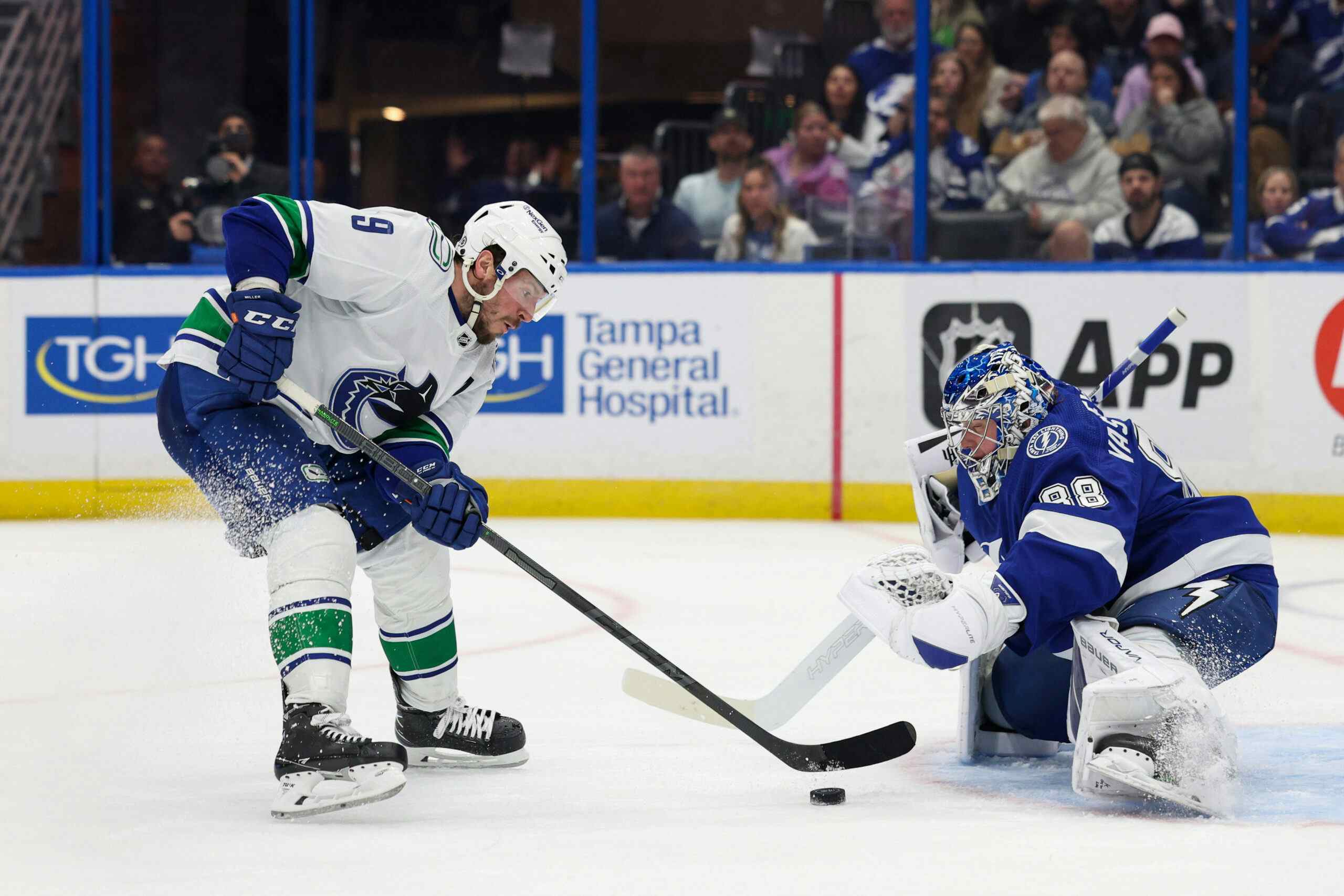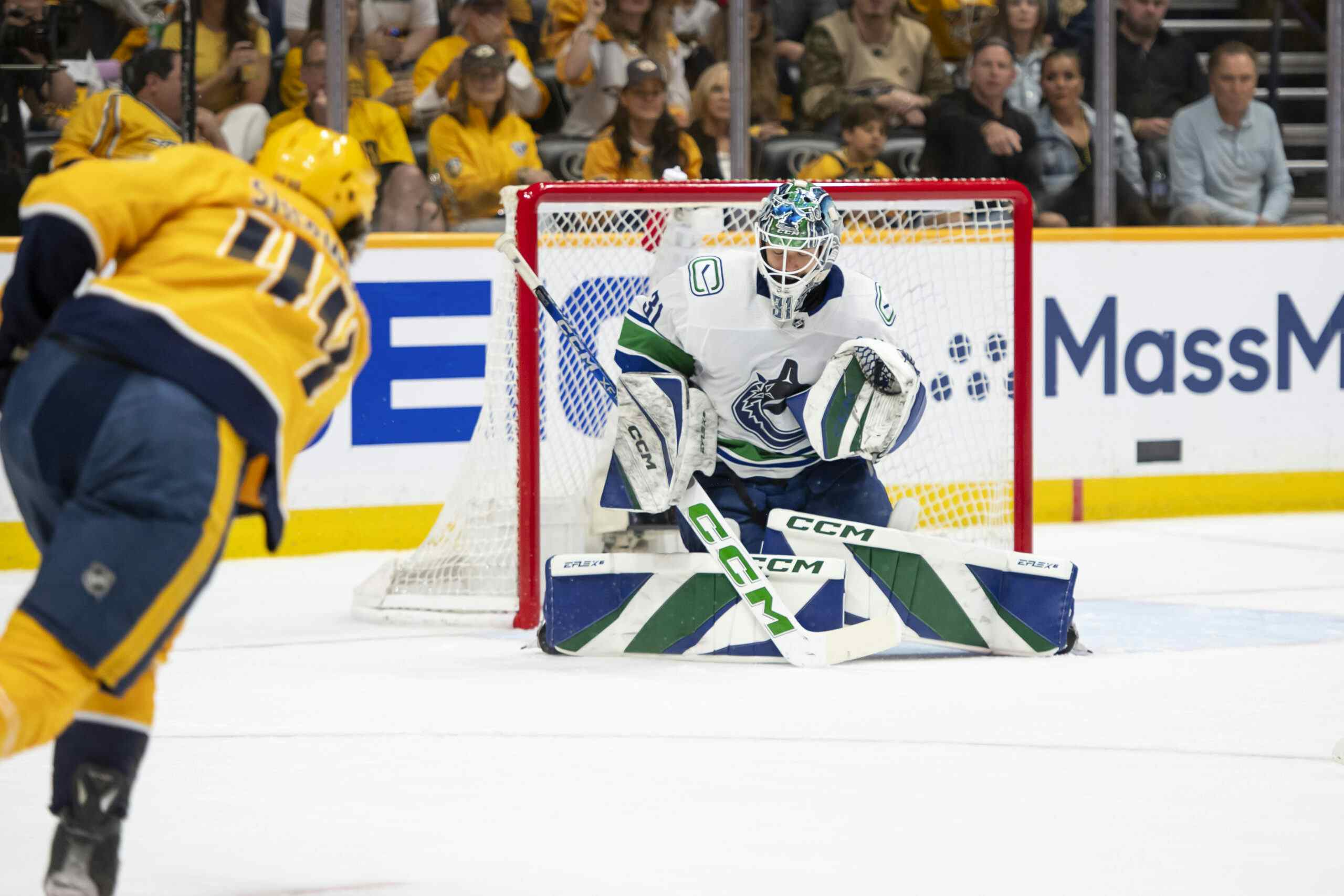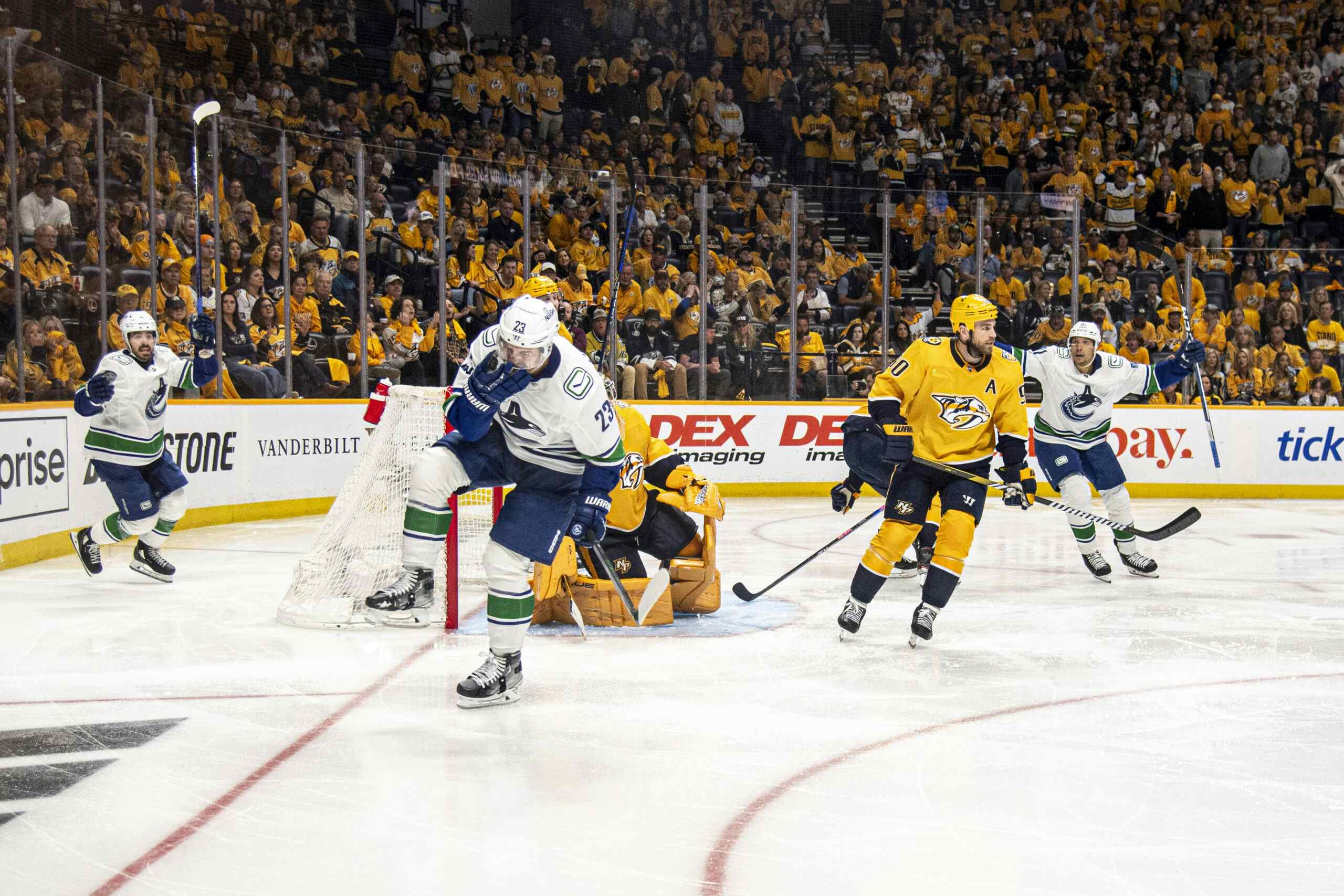Crimson Rising – Patrick McNally
By Jeff Angus
12 years ago
Patrick McNally playing as a member of the Harvard Crimson.
(Photo courtesy canucks.com)
The Canucks didn’t pick until the fourth round back at the 2010 NHL Entry Draft, thanks in large part to the Keith Ballard trade (the team gave up its first round pick, which Florida used to select WHL winger Quinton Howden). With the 115th overall pick, the Canucks took skilled American defenseman Patrick McNally.
McNally was a very interesting pick at the time, as he represented a significantly long-term investment. He still had one more year of prep school hockey to play, as he wasn’t eligible to begin his college career until the fall of 2011 (he had already verbally committed to Harvard). The fact that he had another year of school before starting his college likely scared off a few NHL teams (he was projected to go anywhere from the second to the fourth round at the draft).
McNally is now a member of the Harvard Crimson, a school which competes in the ECAC (Eastern College Athletic Conference) in the NCAA’s top division. Harvard isn’t a noted hockey school, although recent Montreal first round pick Louis Leblanc suited up there for a year before turning pro. Another guy you may remember, Steve Moore, played his hockey there as well.
Not much was known about McNally when he was drafted. He was playing hockey at the Milton Academy, a prep school in New England. In McNally’s last season there, the Mustangs won the State Championship after finishing with an impressive 26-3-1 record. For his part in the team’s success, McNally was named as New England Prep Player of the Year.
It is always a risk to draft players out of high school, as the quality of competition is often lacking (although the Canucks have had success there recently with goaltender Cory Schneider). Still, McNally’s offensive skills were obvious. Milton Academy’s head coach had lots of praise to give to him:
"[McNally] certainly stepped in and was a very good hockey player for us. He created a lot of offense from the blue line and provided a lot of spark. He’s a great student, a good kid and a pleasure to coach. He loves to play hockey, carry the puck, skate, and make plays. There’s a freshness to his game that is really enjoyable. You don’t want to coach that out of him."”
“Pat is an offensive defenseman whose strength is in rushing the puck and putting constant pressure on the defense. He is a very good skater with mobility, speed and quickness. His skating skills and quick hands allow him to escape trouble and move the puck quickly out of danger. In the defensive zone he has very good lateral mobility and closes quickly on the puck carrier, forcing him into quick decisions or mistakes. He is an excellent passer whose passes are accurate and proper for the situation. Doesn’t play a physical game, but relies on quick stick and smarts to gain puck possession.”"[McNally] certainly stepped in and was a very good hockey player for us. He created a lot of offense from the blue line and provided a lot of spark. He’s a great student, a good kid and a pleasure to coach. He loves to play hockey, carry the puck, skate, and make plays. There’s a freshness to his game that is really enjoyable. You don’t want to coach that out of him."”
McNally’s freshman season with Harvard has been a resounding success. He was recently named as the ECAC’s Rookie of the Month for December, after recording 14 points in 12 games. Along with junior defenseman Danny Biega, he makes up the most important part of one of the best power plays in college hockey (Biega and McNally are second and third in points-per-game for defensemen in the entire country, respectively).
McNally compared himself to Mark Streit back before the draft, and the similarities are obvious. McNally is still pretty lanky, but he has projectable size with his 6’2” frame. He skates with a lot of confidence, and he loves to have the puck on his stick as much as possible (some positive attributes also shared by Montreal defenseman PK Subban). McNally closes gaps really quickly with his quick lateral movements and directional changes. Harvard doesn’t play in the toughest conference in D-1 hockey, but McNally is succeeding at a very high level against a much higher level of competition than he faced last season.
The Canucks don’t need (nor would they want) to rush McNally out of college and it wouldn’t be a surprise to see him finish a full four-year term at Harvard (meaning he wouldn’t start his professional career until 2015). The window to win in Vancouver with the current core will be long closed at that point, but having a steady stream of affordable young players is the key to sustainable success in the salary cap era. Not to mention the fact that McNally is being billed as a potential power play quarterback who can skate a regular shift without being a defensive liability, and there is reason to get excited over this prospect who we should be hearing more about.
Recent articles from Jeff Angus





